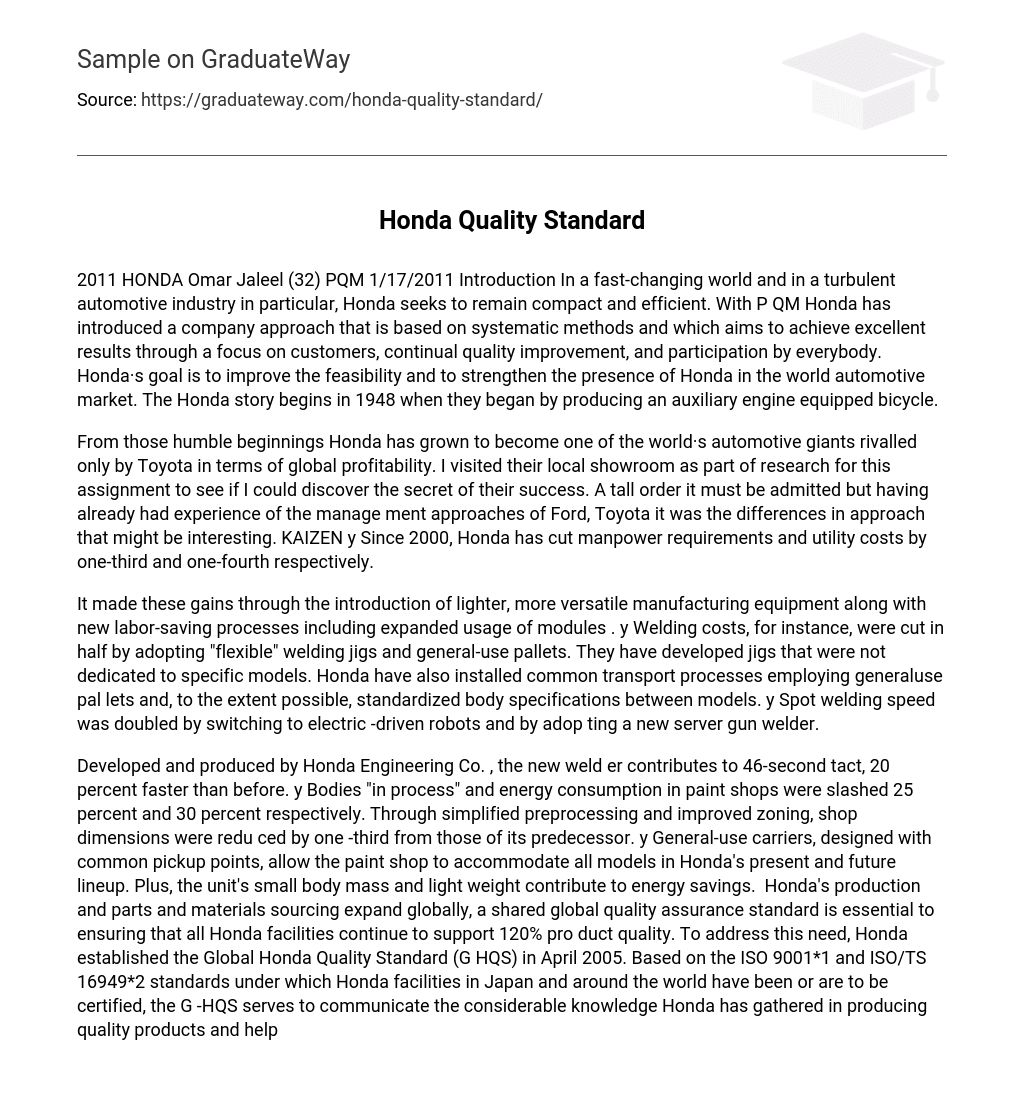In a fast-changing world and in a turbulent automotive industry in particular, Honda seeks to remain compact and efficient. With P QM Honda has introduced a company approach that is based on systematic methods and which aims to achieve excellent results through a focus on customers, continual quality improvement, and participation by everybody. Honda·s goal is to improve the feasibility and to strengthen the presence of Honda in the world automotive market. The Honda story begins in 1948 when they began by producing an auxiliary engine equipped bicycle.
From those humble beginnings Honda has grown to become one of the world·s automotive giants rivalled only by Toyota in terms of global profitability. I visited their local showroom as part of research for this assignment to see if I could discover the secret of their success. A tall order it must be admitted but having already had experience of the manage ment approaches of Ford, Toyota it was the differences in approach that might be interesting. KAIZEN y Since 2000, Honda has cut manpower requirements and utility costs by one-third and one-fourth respectively.
It made these gains through the introduction of lighter, more versatile manufacturing equipment along with new labor-saving processes including expanded usage of modules . Welding costs, for instance, were cut in half by adopting “flexible” welding jigs and general-use pallets. They have developed jigs that were not dedicated to specific models. Honda have also installed common transport processes employing generaluse pal lets and, to the extent possible, standardized body specifications between models. ySpot welding speed was doubled by switching to electric driven robots and by adop ting a new server gun welder.
Developed and produced by Honda Engineering Co. , the new weld er contributes to 46-second tact, 20 percent faster than before. y Bodies “in process” and energy consumption in paint shops were slashed 25 percent and 30 percent respectively. Through simplified preprocessing and improved zoning, shop dimensions were redu ced by one third from those of its predecessor. General-use carriers, designed with common pickup points, allow the paint shop to accommodate all models in Honda’s present and future lineup. Plus, the unit’s small body mass and light weight contribute to energy savings.
Honda’s production and parts and materials sourcing expand globally, a shared global quality assurance standard is essential to ensuring that all Honda facilities continue to support 120% pro duct quality. To address this need, Honda established the Global Honda Quality Standard (G HQS) in April 2005. Based on the ISO 9001*1 and ISO/TS 16949*2 standards under which Honda facilities in Japan and around the world have been or are to be certified, the G -HQS serves to communicate the considerable knowledge Honda has gathered in producing quality products and help prevent issues from recurring.





